The story of Mosshouse Viaduct's demolition: Going...going...gone

- Author: Graeme Bickerdike
- Source: Rail Engineer magazine
- Published: December 08
The story of Mosshouse Viaduct’s demolition: Going…going…gone
Another relic of Ayrshire’s former railway network has been demolished in a six-week operation carried out by its owners, British Railways Board (Residuary).
Built by the Glasgow Paisley Kilmarnock & Ayr Railway in 1848, the diminutive, three-arch Mosshouse Viaduct – found three miles north-east of Cumnock – formed part of the Muirkirk branch which served local collieries and ironworks. Passenger services were derailed in 1950 but the section from Auckinleck to Cronberry, including the viaduct, remained open until December 1976 for coal traffic out of the Gaswater siding.
In 2002, Scottish Coal secured a £9.75million grant to reopen seven miles of the route, supporting the Powharnel opencast mining scheme. Mosshouse Viaduct would have been pulled down and rebuilt – its condition rendering it uneconomic to repair. Although coal is now being extracted, the site’s rail link was never pursued.
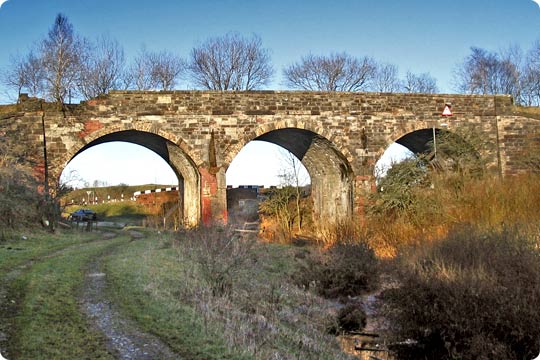
Photo: David Rutherglen
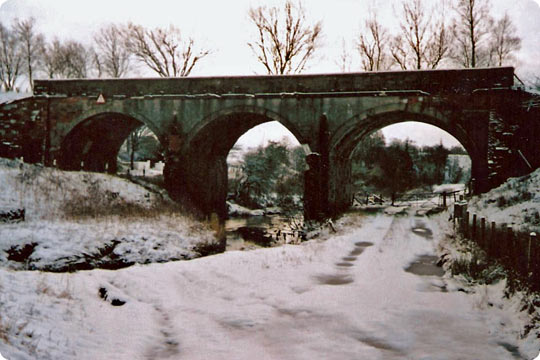
Photo: Adrian Duffield
Mosshouse was largely unremarkable, hiding in the metaphorical shadow of Cumnock’s two, grander disused viaducts – Glenmuir and Glaisnock. Time had not been kind to it. While the south side retained some of its original sandstone, yellow engineering brick had transformed the northern spandrel face. A patchwork of red brick, added more recently, contributed further to its disorderly appearance.
But the decision to demolish had little to do with aesthetics. Beneath its three arches were threaded a farm track, a river – Bellow Water – and a minor road. Above the latter, sections of spalling masonry threatened public safety, prompting three-monthly inspections and regular repairs. Cracks had opened in one of the piers. The structure would have succumbed years ago were it not for the uncertainty generated by Scottish Coal’s interest.
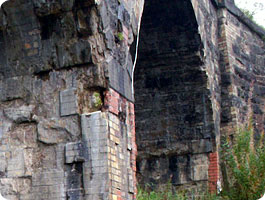
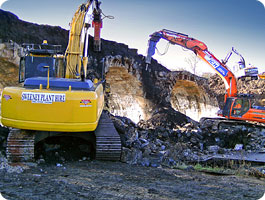
Timescales for the project were effectively defined by the process for obtaining the road closure. With planning permission granted in June, the work was arranged around the October school holiday.
Managing the site was Raynesway Construction, one of two framework contract holders with BRB(R), looking after structures in Scotland and northern England. Operatives from specialist firm Burnfield Demolition were firmly in control of the machinery.
Steel beams, sheet piles, timber sleepers and plywood came together to form an extensive crash deck, protecting the river from falling debris. The Scottish Environment Protection Agency approved this approach. Steel plates safeguarded gas and water pipes running below the farm track. More plates prevented damage to the roadway and other services.
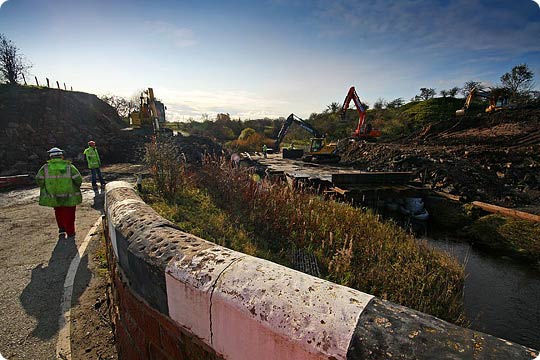
Perched on crane mats, two excavators – one 20-tonne machine and another of 35 tonnes – sliced metre-wide strips from the structure, working north to south. It didn’t put up a fight, falling completely in just five hours.
Clearing and restoring the site took another fortnight. The rubble went to improve access roads on an adjacent farm. Where the abutments once stood, soil and grass seed now cover gently graded embankments. Despite delays caused by flooding during the preparation works, Mosshouse Viaduct was eased from the landscape within the set schedule.
The next few months promise to be busy ones for Raynesway. In Scotland, another three arch structure near Stranraer will soon receive attention. West Yorkshire’s Thornton Viaduct – ready to host a footpath – and Mosedale Viaduct in the Lakes will both be the focus of maintenance work, ensuring neither suffers the same fate as the unfortunate Mosshouse.
More Information
| East Ayrshire Council | Planning application relating to Scottish Coal’s rail link (PDF) |
| Rail Regulator | Sale of Network Rail land for Scottish Coal’s rail link (PDF) |






